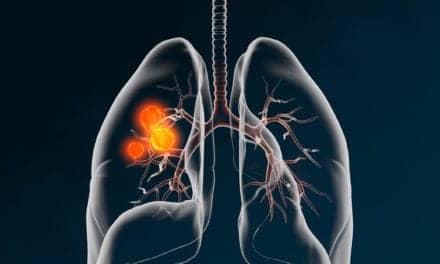Micronoma, a biotech company offering early cancer detection with a microbiome-driven liquid biopsy platform, announced that its OncobiotaLUNG assay received the Breakthrough Device Designation from the U.S. Food and Drug Administration (FDA).
The FDA based its Breakthrough Device decision on the ability of Micronoma’s technology to categorize lung nodules into high-risk or low risk of malignancy through a simple blood draw, even in the earliest stages of the disease, compared to the current standard of care.
Early detection of lung cancer can lead to a higher survival rate. In the U.S., lung cancer accounts for nearly 25% of all cancer-related deaths each year, with more people dying from lung cancer than from colon, breast, and prostate cancers combined, according to the American Cancer Society.
“Receiving FDA Breakthrough Device Designation is a fantastic recognition by the agency and a great milestone for Micronoma,” says Sandrine Miller-Montgomery, Micronoma CEO and co-founder. “While I have always had the utmost trust and admiration for my team, this is an objective recognition of the great science and rigorous work they have been conducting. The possibilities for the Oncobiota platform are endless, and while we are starting with lung cancer, we have active collaborations to pursue other cancer types for which early detection is critically unavailable. This designation is our first opportunity to expedite what we set out to do at our inception: significantly contribute to improving cancer patient care through early diagnosis.”
The work that led to the Breakthrough Device Designation is based on the findings of Micronoma’s co-founders, published in the scientific journals Nature and Cell. These discoveries were then validated in a large, lung-specific cohort, as described in a manuscript shared with the FDA and under review at a high-impact journal.
When an imaging test (e.g., low-dose CT scan (LDCT)) shows an indeterminate lung nodule in a patient, the current standard of care is to keep the patient under surveillance with additional imaging (e.g., more LDCTs, PET-CT scans). Then, if suspicion remains, they are sent for a lung biopsy. However, since 95% of imaged lung nodules turn out to be benign, the current patient journey can be a slow and risky one, with potentially invasive but unnecessary tissue biopsies. In contrast, with a simple blood draw, Micronoma’s OncobiotaLUNG diagnostic assay can help clinicians determine a high-risk versus low risk of malignancy for the detected lung nodules, with diagnostic performance that matches or exceeds the current standard of care.





